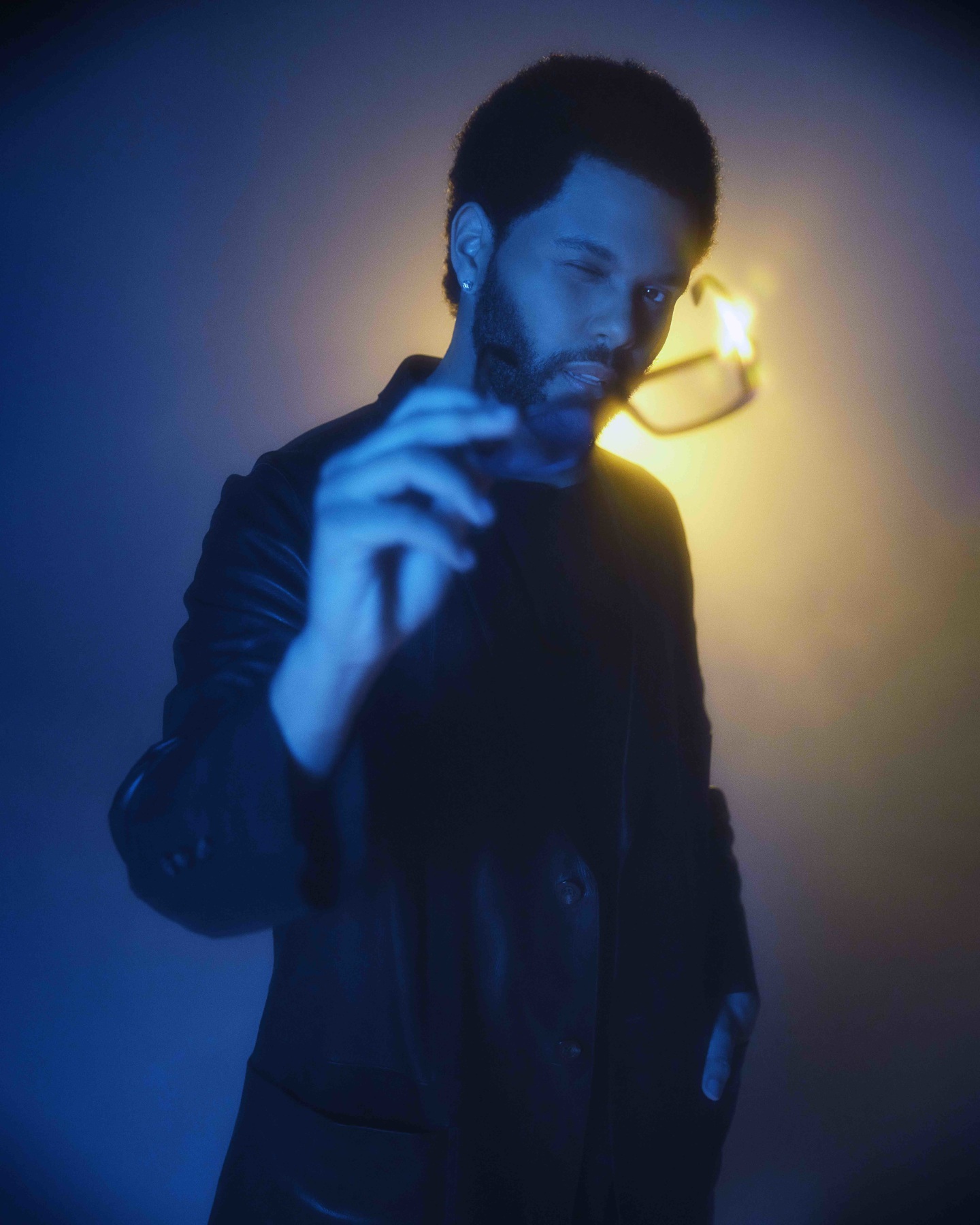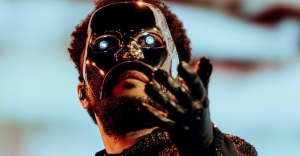 The Weeknd. Photo by Brian Ziff.
The Weeknd. Photo by Brian Ziff.
Over the past decade, The Weeknd has treated his career like a laboratory, running experiments that would initiate his transformation from mercurial mad scientist to a physical embodiment of pop spectacle. The Toronto artist born Abel Tesfaye was once steeped in the black and white shadows of hazy, narcotized alternative R&B releases. But he has found himself drawn to the patterns that dictated the ebb and flow of pop music, like the way catchy hooks paired with disarming, yet unsuspecting delivery opened the door to a formulaic approach strapped with innumerable variations. He made note of how the format of the genre could be used to his advantage without losing that initial aura of mystery or sacrificing the contextual tone he’d established across projects. Then, The Weeknd took his observations outside of the lab for a field study.
Egged on by the sometimes controversial parallels drawn between his vocal cadence and that of Michael Jackson, the uncontested north star of pop performers, The Weeknd brought what was bubbling beneath the surface to a full boil. His first foray into the pop’s glossy, whimsical playground was a positively received guest appearance on Ariana Grande’s “Love Me Harder,” before making a more notable splash with the Max Martin-crafted hit “Can’t Feel My Face” and settling into a familiar, venomous attitude on “The Hills,” both from 2015’s Beauty Behind the Madness. All three displayed an arcane instinct for pop melody in an artist that was still lauded as an R&B act breaking through where he wasn’t supposed to – an urban contemporary darling, as The Grammys would have it. The Weeknd went bigger and better on Starboy, his third studio album shared at the tail end of 2016 that found him paired with a laundry list of hitmakers, from Martin and Benny Blanco to Daft Punk and Cashmere Cat.
By that point, he began embodying the pop star blueprint while going beyond the genre’s sonic expanse, leaving his signature gravity-defying locs in the dust to launch a new visual aesthetic. With a handful of hits under his belt, he wasn’t in the dark anymore – he had to play the part, too. The loyal fanbase that packed out arenas in the early 2010s, back when The Weeknd was still something of a nondescript figure in the night, watched in real-time as he underwent a Jekyll and Hyde-like transformation into full-blown pop stardom. There was the momentary detour of 2018’s My Dear Melancholy (a final send-off to his brooding roots, in hindsight) before the major shift that would follow the double offering of After Hours lead singles “Heartless” and “Blinding Lights.” In the early weeks of the pandemic, the magnetized aura of the latter release pulled the public directly into The Weeknd’s bizarre pop wonderland.
Scored by a collection of synth-heavy stabs at 80s pop, accessorized by a more candid approach to the singer’s signature self-reflection, After Hours came to represent an immersive commitment to the art of an album era. The introduction of an increasingly bloodied and bruised alter ego that materialized in the same red suit with each development – not just in music videos, but also at awards show appearance and outside of performance – rendered The Weeknd too vibrantly gruesome to look away. He was putting on a show inspired by his admiration of film giants like Martin Scorsese and David Lynch without the glossy polish of pop’s Hollywood parallels. Even after the official After Hours era had concluded, The Weeknd extended the on-screen ferocity of his own musical universe to that of his collaborators in visuals shared with Post Malone and Rosalía.
The Weeknd’s initial interest in revamped nostalgia on After Hours was perplexing for some who tend to approach pop’s affinity for replication and renaissance with skepticism. There’s no shortage of pining for the past in his fanbase, either: Plenty of OG fans have been begging since Starboy for the singer to return to his roots, but he’s been too far gone for far too long. Through experimentation, The Weeknd had perfected formulas for both his groundbreaking R&B sound and initial expeditions into pop. The mission, it seems, was to keep everyone questioning – questioning the music, the visuals, the intention, the man behind it all.
These days, The Weeknd has grown bored with merely tinkering with pop’s boundaries. On his new release Dawn FM, he is mapping out a restructure. Across 15 tracks in under an hour, the album stokes curiosity. How far can he push the limits before they cave in? How secure is the foundation, really? Scrapping a traditional rollout, by not nearly obsolete, the singer offered only four days' notice before sharing the project, a fully realized conceptual album anchored by the notion of a purgatorial traffic jam as a version of himself aged decades into the future awaits entry to the afterlife. Formatted like a radio station’s programming, Dawn FM is marked by abnormal and at times eerie pacing but bolstered by simultaneously comedic and existential interceptions from special guest narrators Jim Carrey and Quincy Jones.
The Weeknd himself tries on a number of hats throughout the record, adopting strange accents and cadences as he tackles regret, unrequited love, and trepidation. The sonic landscape, which he co-created with past collaborators Martin, Oneohtrix Point Never, Oscar Holter and appearances from Swedish House Mafia and Calvin Harris, builds on After Hours and Starboy in a distorted manner. Its brand of pop recalls the aesthetic of an arcade as much as it calls to mind the pulsating dance floor of a discotheque. The largely dark, electro-pop dance record packs itself with references spanning pop history, with weighted influence from Michael Jackson and Prince as The Weeknd wields the sounds with natural ease.
An exploration of The Weeknd’s individual contributions to pop and how he functions within the genre as a performer yields revolutionary developments within his own discography. This might be what keeps the evolution of his sonic universe interesting and exciting, along with his total commitment to the narrative he’s crafted both in the studio and on camera. This once-lowkey and mysterious artist has embraced a loud and attention-demanding presence, barreling through pop on what seems like more of an expedition than it does a road to innovation, and it’s only getting weirder as he gains speed.
Soon, The Weeknd will star in The Idol, a dramatic HBO series co-created with Euphoria’s Sam Levinson exploring the intersection of clubs, cults, and pop music. Extending beyond the realm of music, there’s a certain freedom afforded to The Weeknd through these uncontained detachments that scatter him across formats. With each passing progression, the pavement behind him crumbles and as the double white lines give way to the end of the road, the question remains of how he continues forward from there. Nothing he’s left behind is of any use anymore. That said, it’s better to leave the audience curious and intrigued, even confused, than it is to leave them bored. That, ultimately, is the key to cracking the pop equation, and it’s something that’s built into The Weeknd’s DNA.
